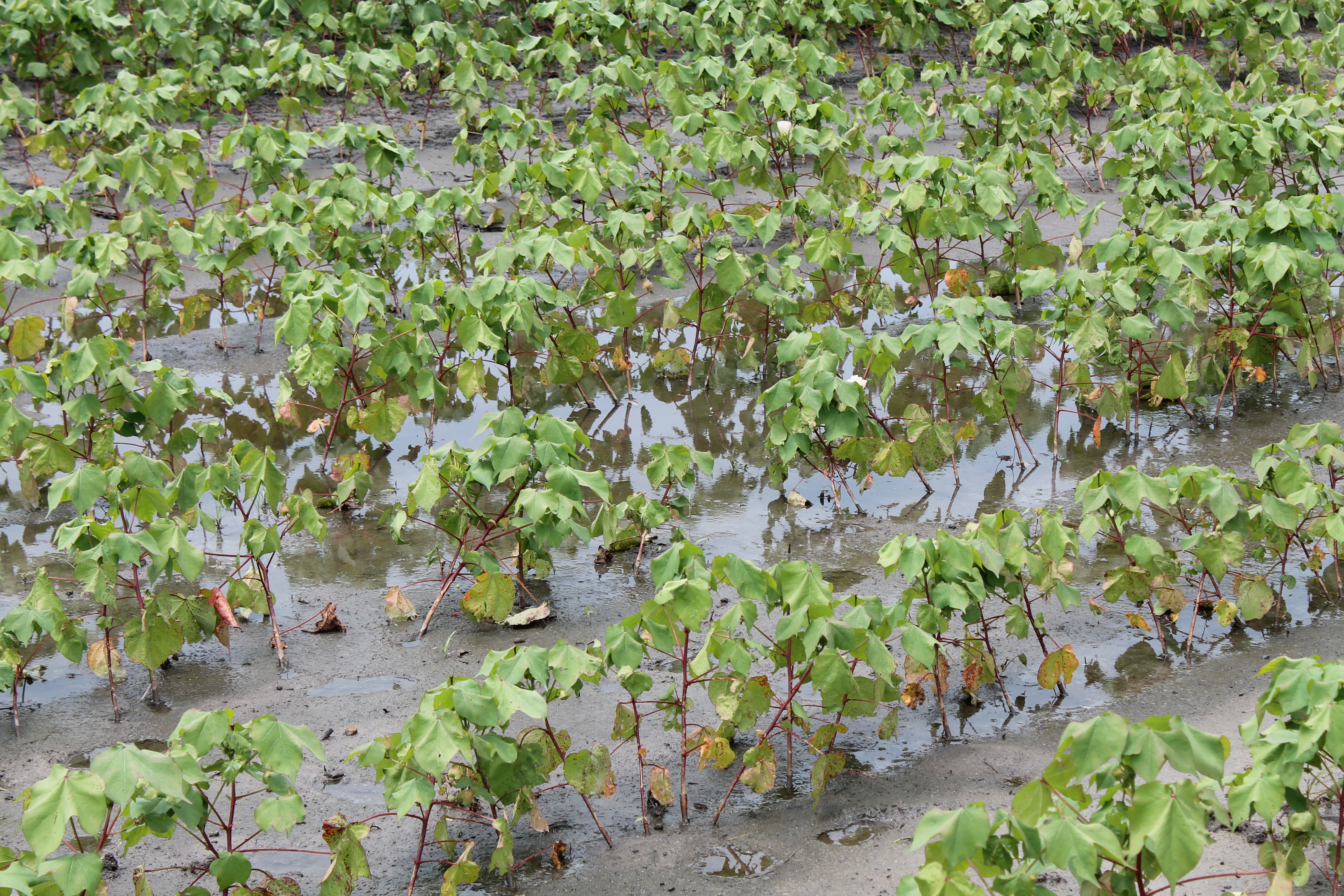In recent days, farms in several central and western panhandle counties have received exceptional amounts of rainfall. Some areas reported as much as 25 inches of rain in the last week. Excessive rain and the accompanying flooding will cause a variety of problems for producers.
Extreme cases of flooding can cause crops to become submerged in water resulting in potentially devastating losses. The foliage of submerged plants will quickly begin to die because submerged leaves are not able to exchange atmospheric gases (mainly carbon dioxide and oxygen). More commonly, producers will be faced with flooded or persistently saturated soil which has a negative impact on root ability to absorb nutrients. If the soil stays completely saturated for extended periods, root loss can occur. Root cells in saturated soils are unable to exchange gases which can cause them to die. Root loss amounts can vary depending on the length of time the soil is completely saturated. Total root loss would result in plant death and total crop failure. Partial root loss would result in lower plant performance and lower crop yields.
Excessively wet conditions can negatively affect crop production in other ways. Abnormally high amounts of rain can leach nutrients, especially nitrogen, from the soil. Nitrogen added to the soil in the form of granular fertilizer is especially vulnerable to leaching. If this occurs, farmers either have to incur the additional cost of reapplying fertilizer or experience the reduction in crop yield associated with nutrient deficiency.
Flooded or wet conditions can prevent farmers from accessing their fields with necessary equipment. Crop yields will fall dramatically if required crop care cannot be provided. Herbicides, pesticides and fungicides must all be sprayed at the correct time to maximize crop productivity and yield. Even if it is possible to spray crops later in the season after soil moisture reduces, the damage to crop yields will likely be done. Also, wet conditions and warm temperatures prevalent associated with summer flooding are perfect for fungal growth creating an even greater demand for effective crop care. It is important for growers with flood damaged crops to scout their fields for weed and disease problems so that a cost-benefit analysis can be taken as soon as fields are accessible. The results of this analysis will determine if corrective action is economically feasible.


